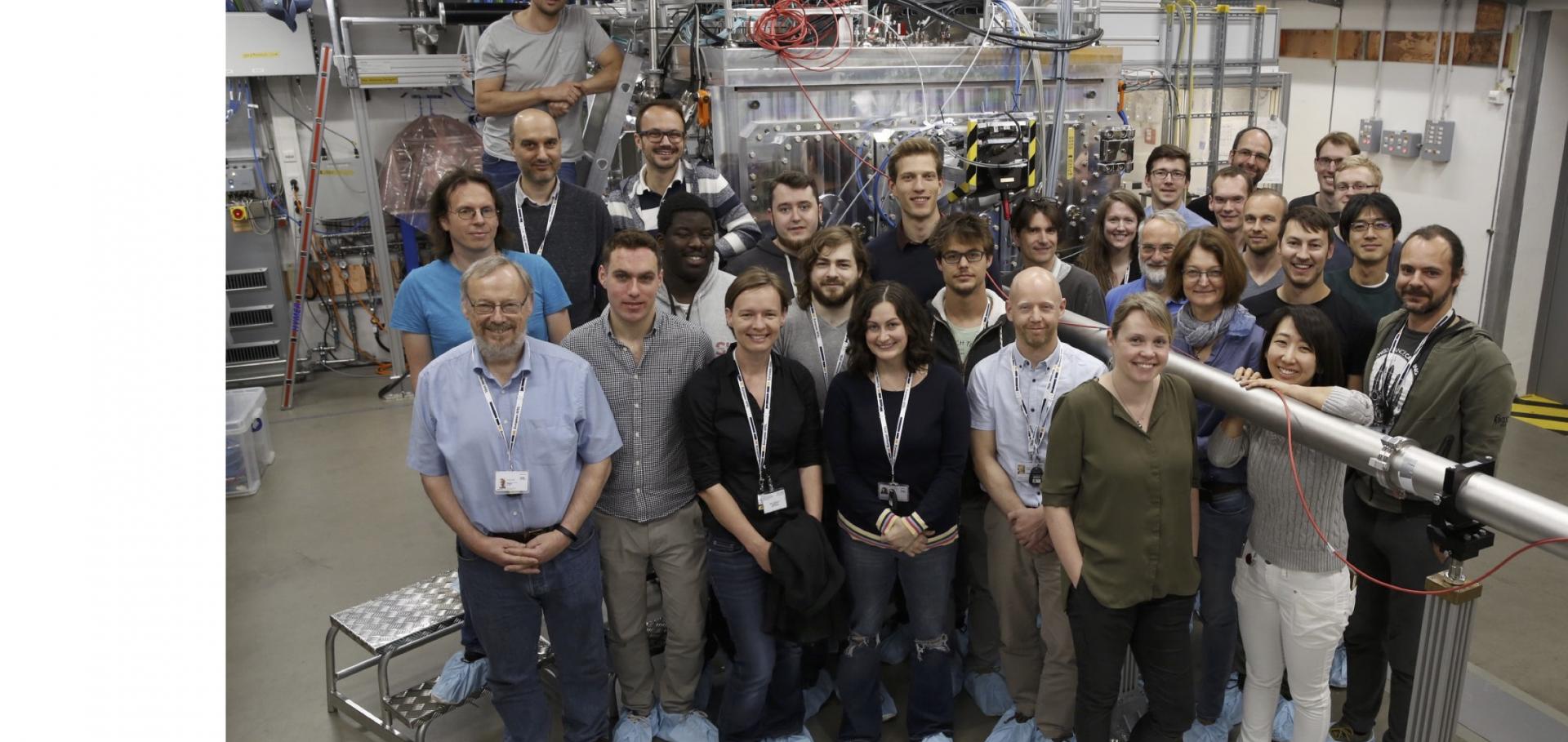Femtosecond quantification of void evolution during rapid material failure
Science Advances American Association for the Advancement of Science 6:51 (2020) eabb4434
Abstract:
Understanding high-velocity impact, and the subsequent high strain rate material deformation and potential catastrophic failure, is of critical importance across a range of scientific and engineering disciplines that include astrophysics, materials science, and aerospace engineering. The deformation and failure mechanisms are not thoroughly understood, given the challenges of experimentally quantifying material evolution at extremely short time scales. Here, copper foils are rapidly strained via picosecond laser ablation and probed in situ with femtosecond x-ray free electron (XFEL) pulses. Small-angle x-ray scattering (SAXS) monitors the void distribution evolution, while wide-angle scattering (WAXS) simultaneously determines the strain evolution. The ability to quantifiably characterize the nanoscale during high strain rate failure with ultrafast SAXS, complementing WAXS, represents a broadening in the range of science that can be performed with XFEL. It is shown that ultimate failure occurs via void nucleation, growth, and coalescence, and the data agree well with molecular dynamics simulations.High energy density science with X-ray free-electron lasers
Proceedings of the International School of Physics "Enrico Fermi" 199 (2020) 147-170
Abstract:
Extreme states of matter with high temperatures and pressures can be created by irradiating matter with either intense X-rays emitted by X-ray free-electron lasers (FELs), and by heating and/or compression with optical lasers and then using the FEL X-rays as a probe. We provide here a very basic introduction to this burgeoning field, highlighting a few specific experiments, and signposting some directions for future exploration.Kinematics of slip-induced rotation for uniaxial shock or ramp compression
(2020)
A novel method to measure ion density in ICF experiments using X-ray spectroscopy of cylindrical tracers
Physics of Plasmas AIP Publishing 27:2020 (2020) 112714
Abstract:
The indirect drive approach to inertial confinement fusion (ICF) has undergone important advances in the past years. The improvements in temperature and density diagnostic methods are leading to more accurate measurements of the plasma conditions inside the hohlraum and therefore to more efficient experimental designs. The implementation of dot spectroscopy has proven to be a versatile approach to extracting spaceand time-dependent electron temperatures. In this method a microdot of a mid-Z material is placed inside the hohlraum and its K-shell emission spectrum is used to determine the plasma temperature. However, radiation transport of optically thick lines acting within the cylindrical dot geometry influences the outgoing spectral distribution in a manner that depends on the viewing angle. This angular dependence has recently been studied in the high energy density (HED) regime at the OMEGA laser facility, which allowed us to design and benchmark appropriate radiative transfer models that can replicate these geometric effects. By combining these models with the measurements from the dot spectroscopy experiments at the National Ignition Facility (NIF), we demonstrate here a novel technique that exploits the transport effects to obtain time-resolved measurements of the ion density of the tracer dots, without the need for additional diagnostics. We find excellent agreement between experiment and simulation, opening the possibility of using these geometric effects as a density diagnostic in future experiments.X-ray spectroscopic studies of a solid-density germanium plasma created by a free electron laser
Applied Sciences MDPI 10:22 (2020) 8153


